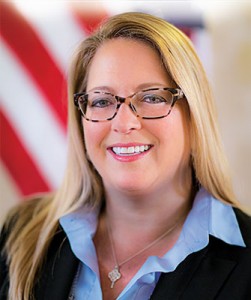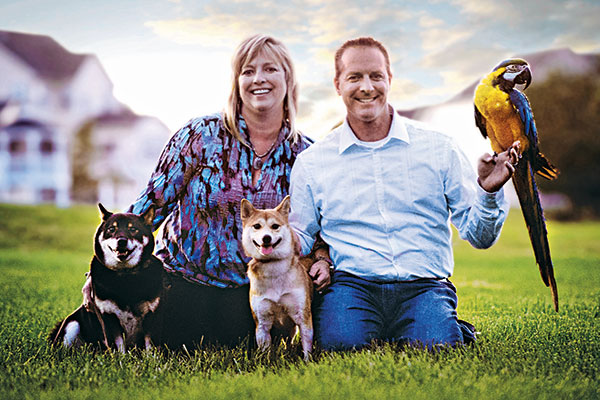Dominique Stumpf, CAE, CMP, is only the ninth leader to take the reins of the National Pest Management Association since its founding in 1933. Pest Management Professional sat down with her to talk about the association and its strategies for growth.

Photo: NPMA
PMP: You’ve been with the association since 1997, and over your industry career have seen record growth in attendance and financial return for PestWorld. But your undergraduate degree from Kent State University is in history (minoring in political science/pre-law), and your master’s degree is in political science. What made you go into association management, and specifically with the then-National Pest Control Association (NPCA) — now the National Pest Management Association (NPMA)? Was it a matter of just needing a job and falling in love with it over time, or was it on your radar from the start?
DS: After completing my master’s program at the University of Akron, with a certification in campaign management, I worked for the Governor’s Association as a communication analyst, primarily developing campaign position papers. As it was a reelection year, there was a lot of event planning also going on around me, which gave me insight into a field to which I’d not been exposed. When looking for my next job, the position with the NPCA was meetings/executive assistant, which gave me the opportunity to jump into the field.
PMP: In 2012, we interviewed you for a Pest Management Professional (PMP) Difference Makers profile. You noted the major obstacles for the NPMA at that time included keeping up with the next generation as it relates to programming and, perhaps more importantly, stressing the importance to younger pest management professionals (PMPs) of attending a face-to-face meeting vs. simply getting information online. Would you say that is still a top obstacle facing the association today?
DS: The last four years have only amplified the NPMA’s need to reach the next generations. What we have realized is that Generations X, Y and Z perceive associations in a completely different way than their parents and grandparents do.
For most professionals of the Baby Boomer generation, it was an obvious conclusion: You joined the association that represented your industry. Boomers realized the inherent value of being part of this community of like-minded individuals, and they saw the association as their primary source for industry-related information and professional development opportunities. This was their primary outlet for networking with their peers and for continuous learning and development.
By contrast, Gen Xers and Millennials (Gen Yers) were brought up in a different world; they have different expectations for their associations. For younger generations, joining an association is an option — and one that you need to make attractive. These generations are used to quicker communication, easily accessible information, and getting their voices heard when they have something to say.

Dominique Stumpf resides in Maryland with her husband, Matt, and from left, Guinness, Stella and Sadie.
Photo: Dominique Stumpf
The question the NPMA needs to ask is, what kinds of returns do younger people seek and demand in return for membership? There are a number of possibilities, including tangible member services, high levels of accountability to members, identifiable career advantages from membership, a sense of professional community, and opportunities to serve within associations. What we need to know is the right scale and combination of services required to meet these needs.
PMP: In the same profile, you identified the NPMA’s Top 3 opportunities as identifying niche markets and offering educational resources in a timely manner; developing programs that meet the needs of a diverse membership portfolio, and the international marketplace. Have those three points changed or evolved since that time?
DS: While all three of these opportunities still exist, later this month the NPMA will embark upon a facilitated strategic planning process involving nearly 100 industry professionals, including board members from the NPMA, the Professional Pest Management Alliance (PPMA) and QualityPro, as well as the chairs of its 23 other committees. We’re meeting to understand the collective needs of members, identify significant industry challenges, refine the association’s vision and set its strategic direction. I am confident that this exercise will provide us with the direction we need to respond to the top membership needs.
PMP: How has your standing as a certified association executive (CAE) and certified meeting planner (CMP) helped you as COO, and how is it helping you in your role as CEO?
DS: Any professional designation, whether it’s CMP, CAE, ACE or BCE, implies that an individual has the desire and commitment to increase the level of professionalism in his or her career. For me, the preparation for the CAE exam forced me to focus on areas in association management with which I was not as familiar. It helped me to become a more well rounded professional. Along with my experience and industry background, I am confident that this helped me gain the knowledge I need to be successful as the NPMA’s CEO.
PMP: You’ve been a longtime staff liaison for the NPMA’s Professional Women in Pest Management (PWIPM) and the Leadership Development Group (LDG). Since taking on the CEO role March 16, are you still tackling these responsibilities, or have you had to pass the baton? What have been some of the other changes for you in your new position?
DS: In light of the expanded responsibilities of my new role, I had to transition these groups to other team members. It’s truly bittersweet for me, as I was there from the beginning and I feel very proud of where PWIPM and LDG are at this juncture. But I know that Allie Taisey will be amazing as the PWIPM staff liaison, and Alexis Wirtz will build upon the momentum created with the LDG.
PMP: Last but not least, what’s next for NPMA?
DS: The pest management industry is unlike other similarly situated industries. I hope people agree that the NPMA has helped make pest management special, and has played a large role in the growth and professionalism of the industry. I’d like to build on that success by positioning the industry to meet the challenges the next generation of PMPs will face.
NPMA Timeline
Editor Heather Gooch can be reached at hgooch@northcoastmedia.net or 330-321-9754.
Dominique, Congrats, you deserve it!!!!!!! Dayton and Sheila